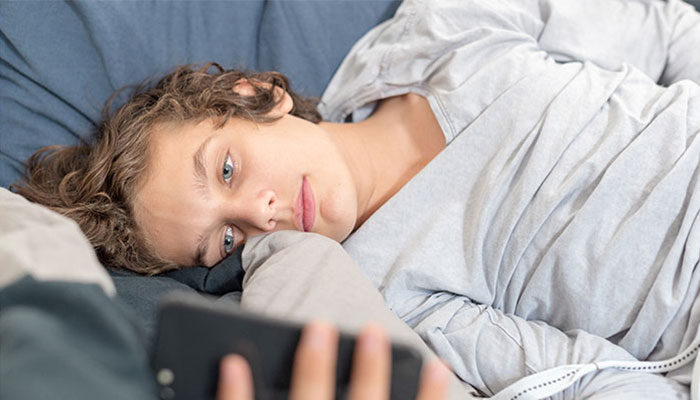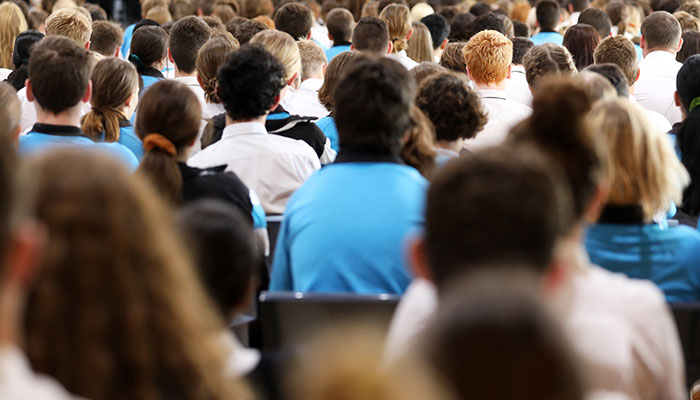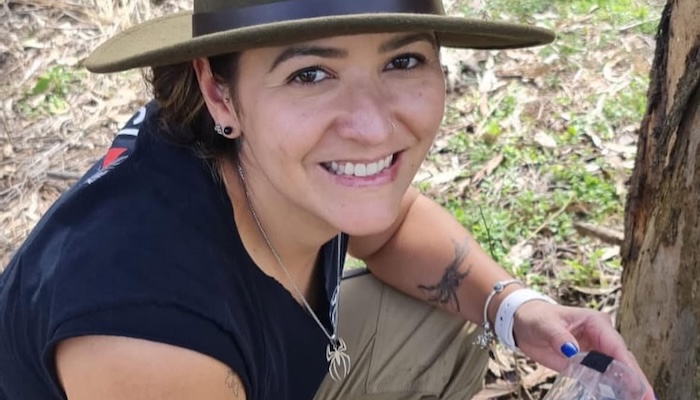A study that aims to identify early indications of mental health issues in teenagers has found a correlation between tweens' use of social media and the emergence of issues including social anxiety and poor body image.

Tender years: Professor Ron Rapee said social anxiety disorder, depression and eating disorders specifically begin in the teenage years.
It has also found links between a lack of sleep and depressive feelings in young adolescents.
Professor Ron Rapee of the Department of Psychology set up the Raw Project, a longitudinal study that conducts annual assessments on the emotional health of young people in a bid to discover the warning signs in children who may, in their teens and beyond, develop mental health issues.
“There are three mental health problems that specifically start in adolescence,” Professor Rapee says. “Social anxiety disorder, which has an average onset age of 13; depression, which most dramatically emerges in 14-15 year-olds, and eating disorders, which experience an upswing in those aged 13-17.”
Comparing appearances is destructive
The driving question behind the Raw Project, run out of the Centre for Emotional Health, is: what are the characteristics of adolescence that trigger these mental illnesses?
And now, after four years of tracking their participants, insights are emerging, including how social media affects young people's happiness.
“Early indicators are that kids who compare themselves on social media, thinking others are more attractive and have better lives are more likely to be socially anxious with difficult relationships, to be victimised, and have fewer friends,” he says.
“They also have a slightly worse body image than those children who use don’t use social media.”
He also notes that of the 500-plus 11-year-old participants who began the study, more than 70 percent were social media users, despite 13 being the lawful age to use sites such as Facebook and Instagram. This increased to 90 percent by the time the children were 13.
“We also found that kids who were more developed, pubertally, thought that others looked better than them on social media. They compared their appearance more negatively to others,” says Professor Rapee.

Raw facts: The Raw Project began in 2016 and has annually surveyed high school students about friendships, moods, bullying and sleep for the past four years.
The early findings also prove the value of sleep. At 11, the participants slept an average of just over nine hours per night (however, this dropped to 8.4 hours by age 13). It emerged that less sleep was related to higher levels of anxiety and depression and more feelings of social isolation.
The Raw Project began in 2016 when Professor Rapee and his team of six postdoctoral fellows, a project manager and various students, recruited 528 Year Six students and one of their parents or caregivers.
Each participant agreed to an annual evaluation that involves a one-hour online questionnaire, a one-hour telephone interview, and, for the child only, a three-hour laboratory session at the university. Funding, primarily from the Australian Research Council and Macquarie University, guaranteed the study could be undertaken for four years, with another funding round soon aiming to ensure it can continue until the participants are 18.
The questionnaire asks the parent/caregiver and child questions about a variety of personality, emotional and social factors, including friendships, anxiety, mood, bullying, appearance concerns, sleep, coping styles, life satisfaction and resilience.
The telephone interview, conducted a week later, asks about the child’s emotional functioning and includes questions about anxiety, low mood and body image/eating concerns.
In the laboratory session, participants complete games and activities; some on computers, some involving puzzles or problem solving, and others requiring verbal answers to questions posed by the clinicians.
- Gaming headsets to help tackle concussion in sport
- Why can you see the sun and the moon at the same time?
One example is an eye-tracking machine that evaluates the direction of the children’s eye gaze in response to pictures of different people. “This serves to evaluate how quickly they learn to respond to particular images and how quickly they ‘unlearn’ that response, the results indicating how long they persist in the face of frustration,” says Professor Rapee.

Support: Professor Ron Rapee's Raw Project is aimed at helping teens emerge from adolscence mentally healthy.
And because these are teenagers, the carrot dangling at the end is a $100 gift voucher, and various competitions and games and prizes throughout the year. For the parents/caregivers, there is also a measure of reassurance, with any troubling indicators brought to their attention, and support offered.
There has been, Professor Rapee says, an astronomical amount of data gathered, all of which needs to be coded, cleaned (of anomalous answers) and scored. It is, he says, a huge undertaking and that’s why the preliminary findings primarily relate to 11-year-olds, although the participants are now aged 14-15 years.
The final results will be invaluable in helping teenagers emerge from the storm of adolescence mentally healthy. Once the study is completed, the team’s first step will be to develop a theoretical model showing the causal links between behaviour and issues. They will then create processes that might predict the onset of mental health problems.
Eventually, this knowledge can inform programs for parents and high schools that help identify, and aid, teenagers who might be susceptible to mental illness at a time when those issues are emerging, rather than years down the track.
Professor Ron Rapee is an ARC Australian Laureate Fellow and Distinguished Professor in the Department of Psychology and Centre for Emotional Health.



